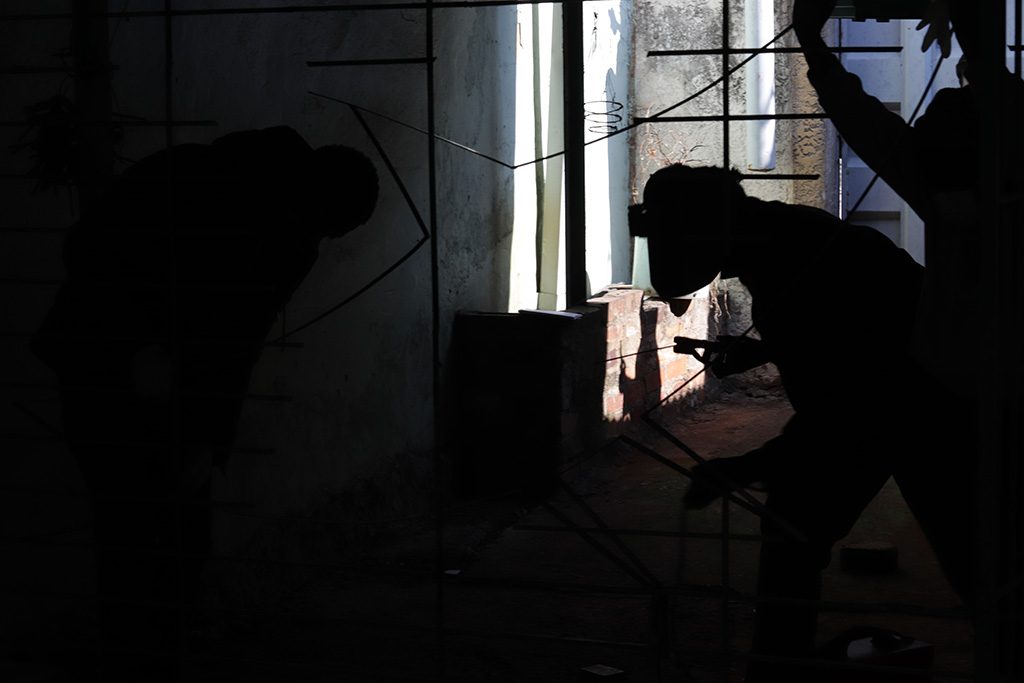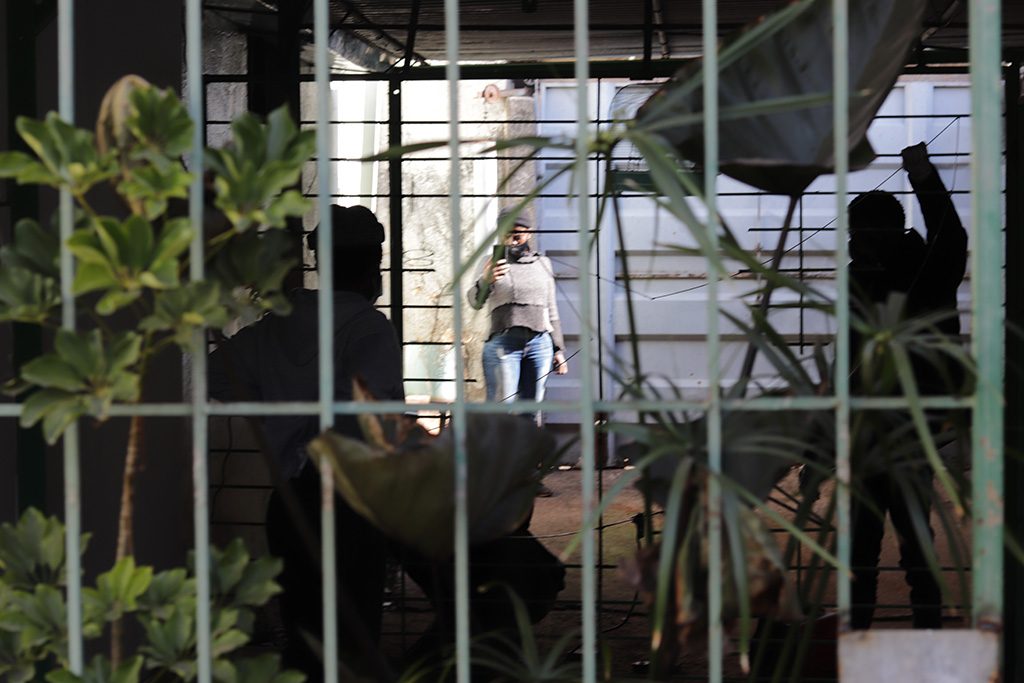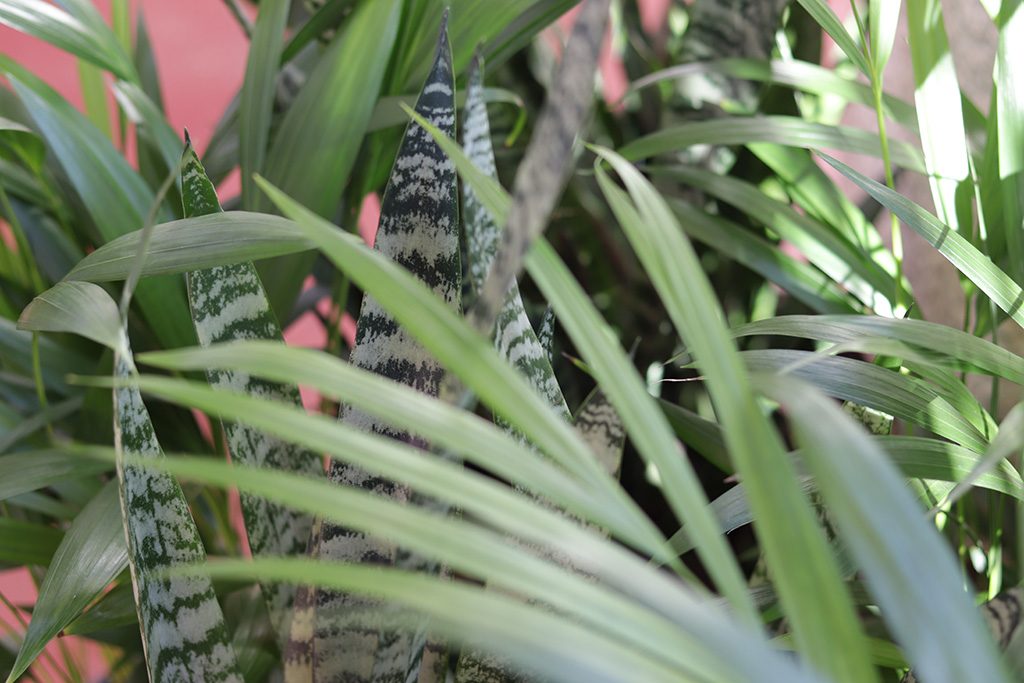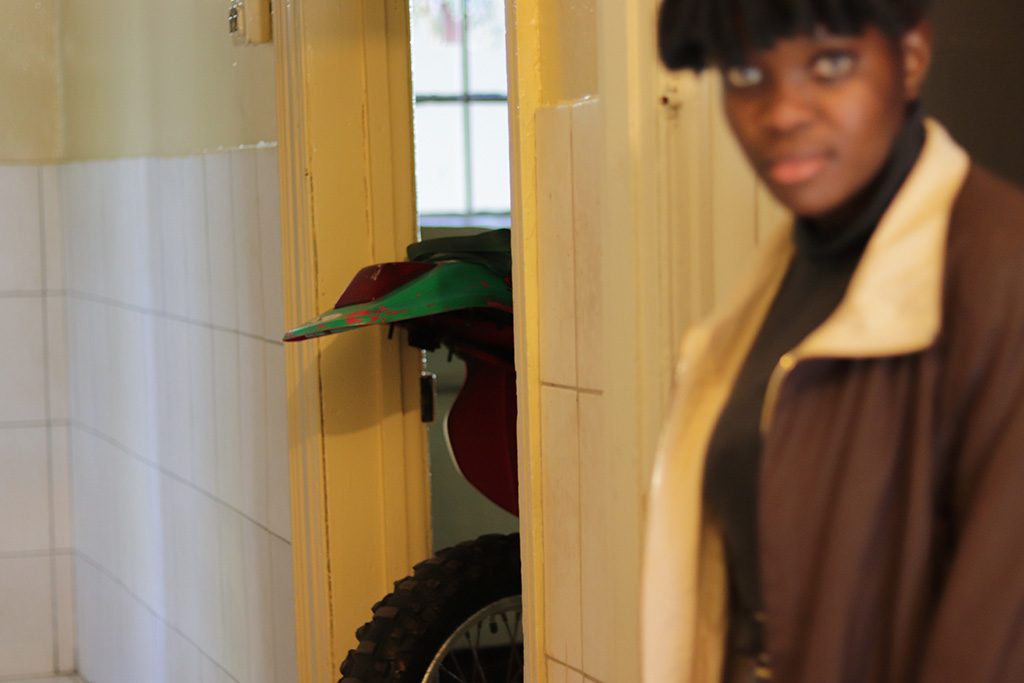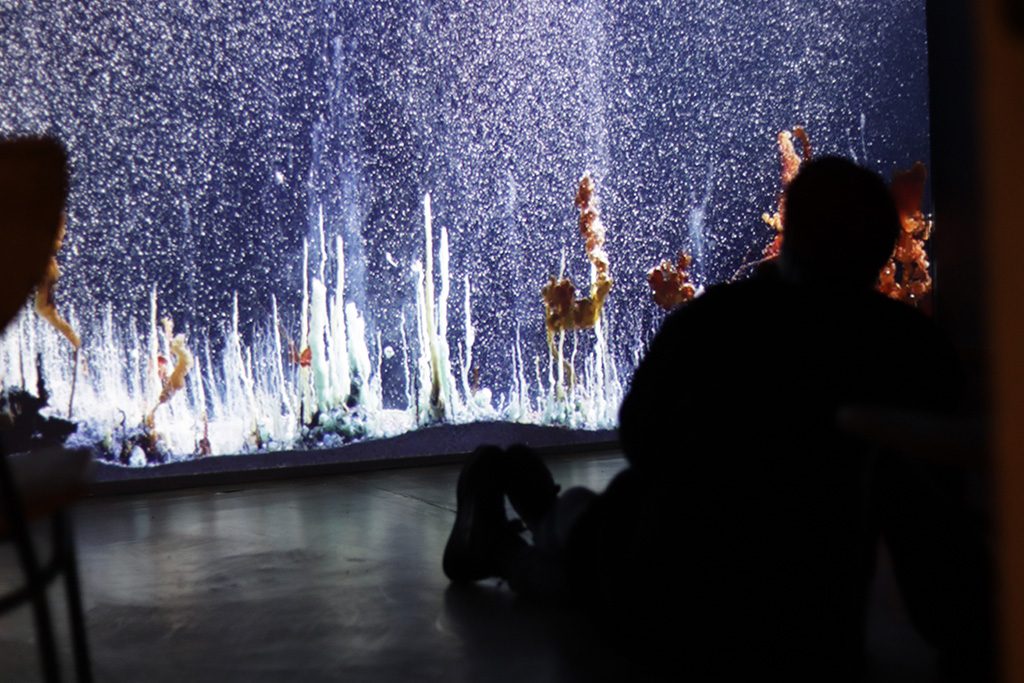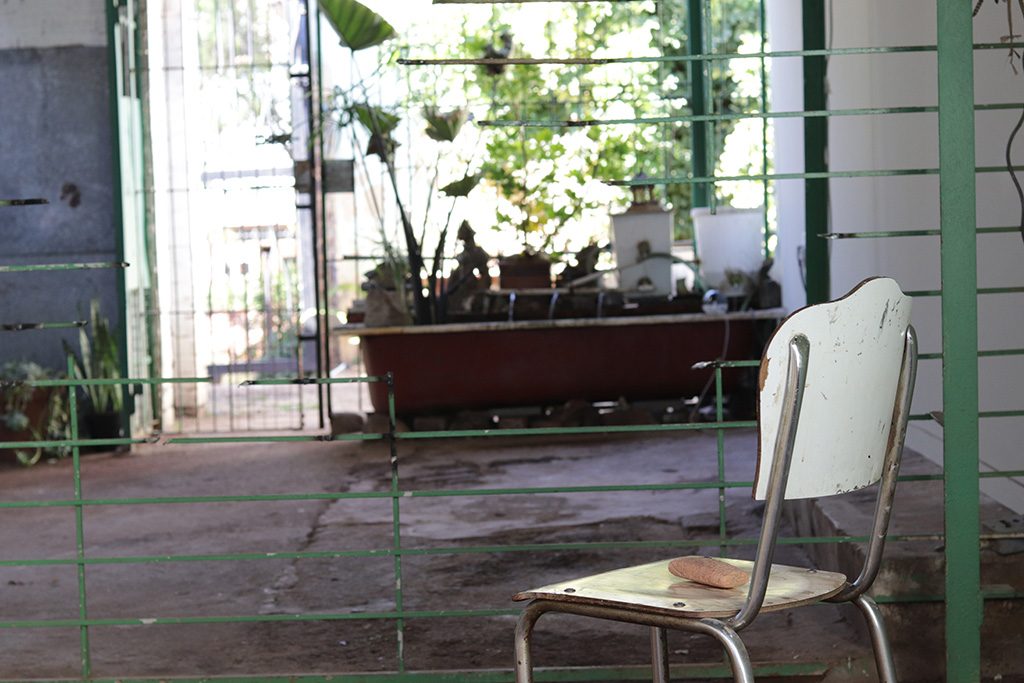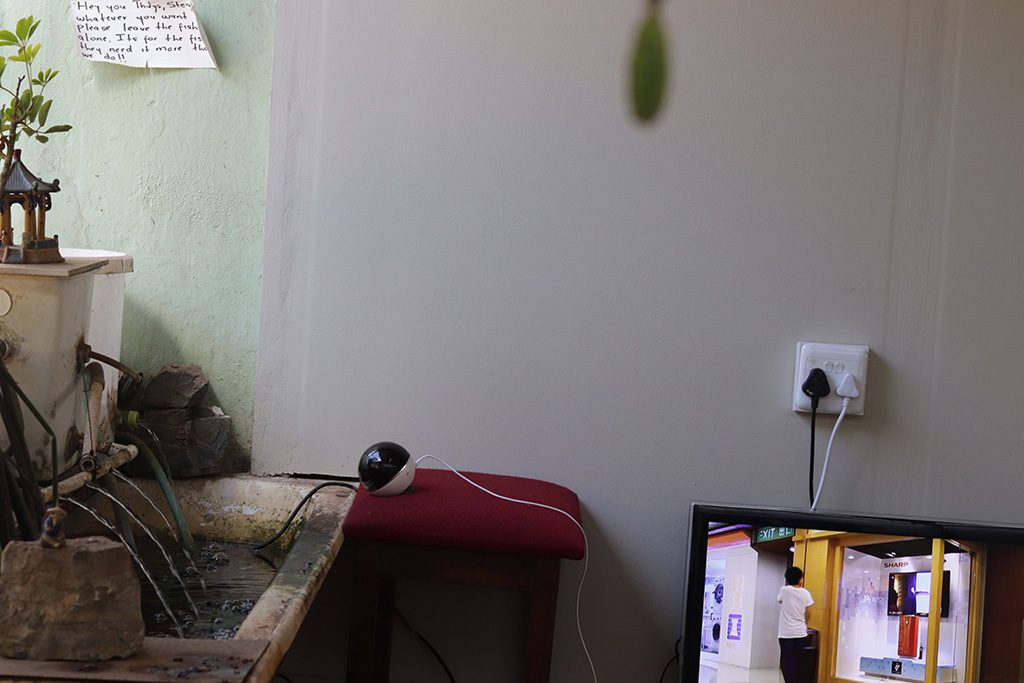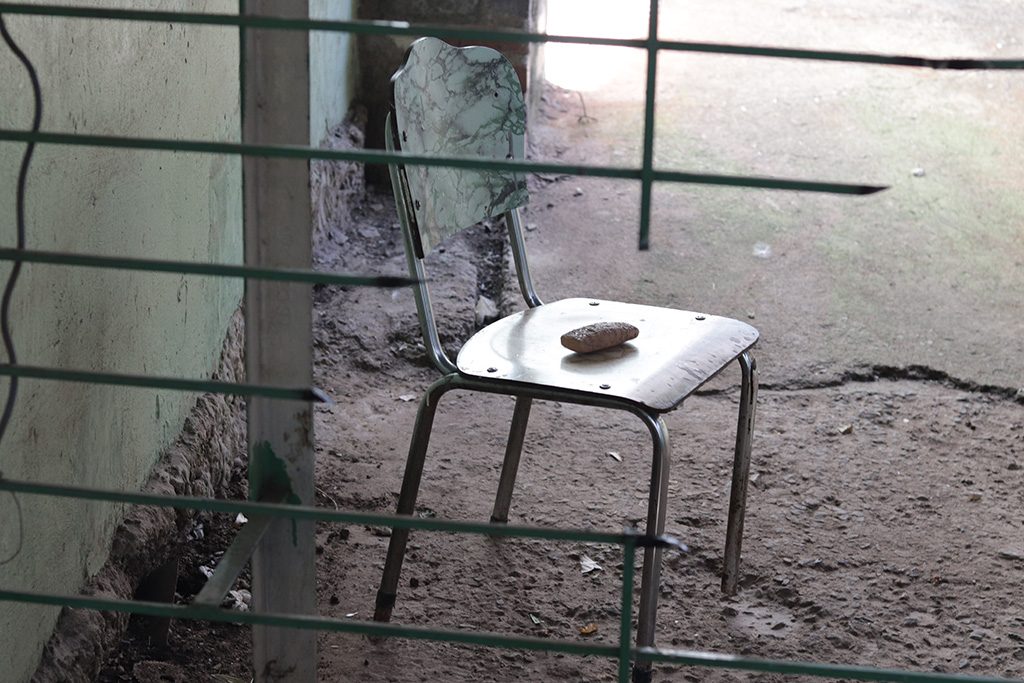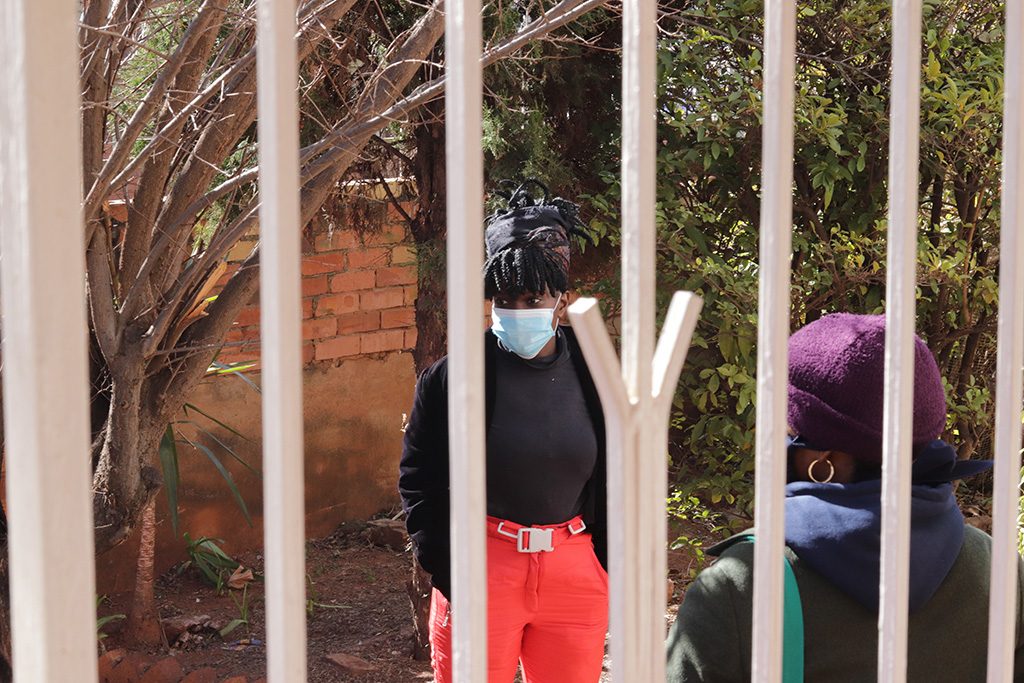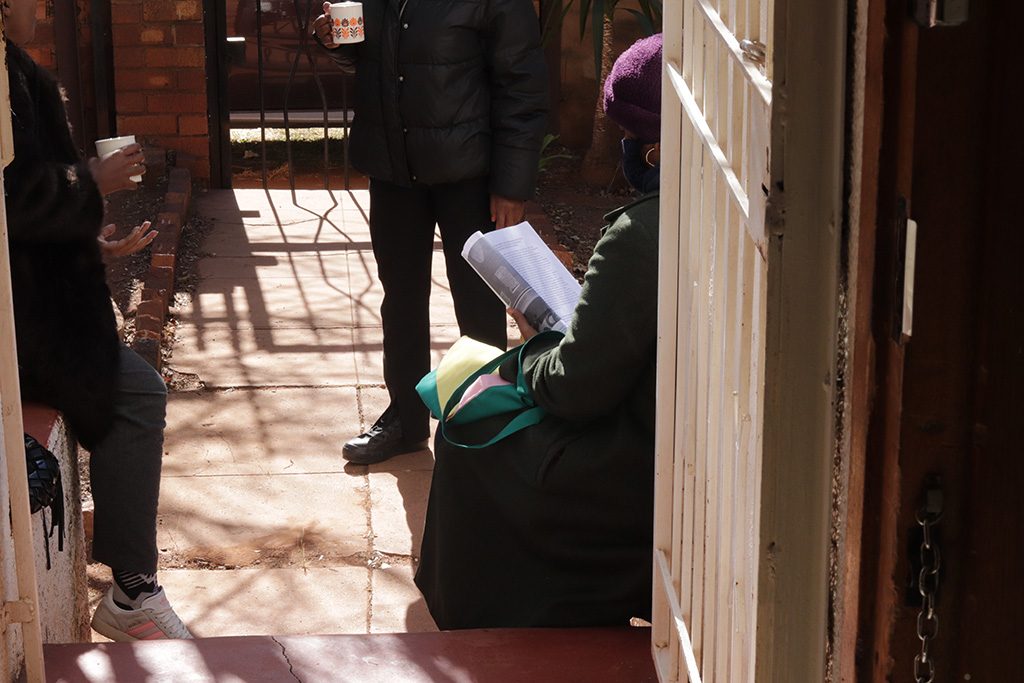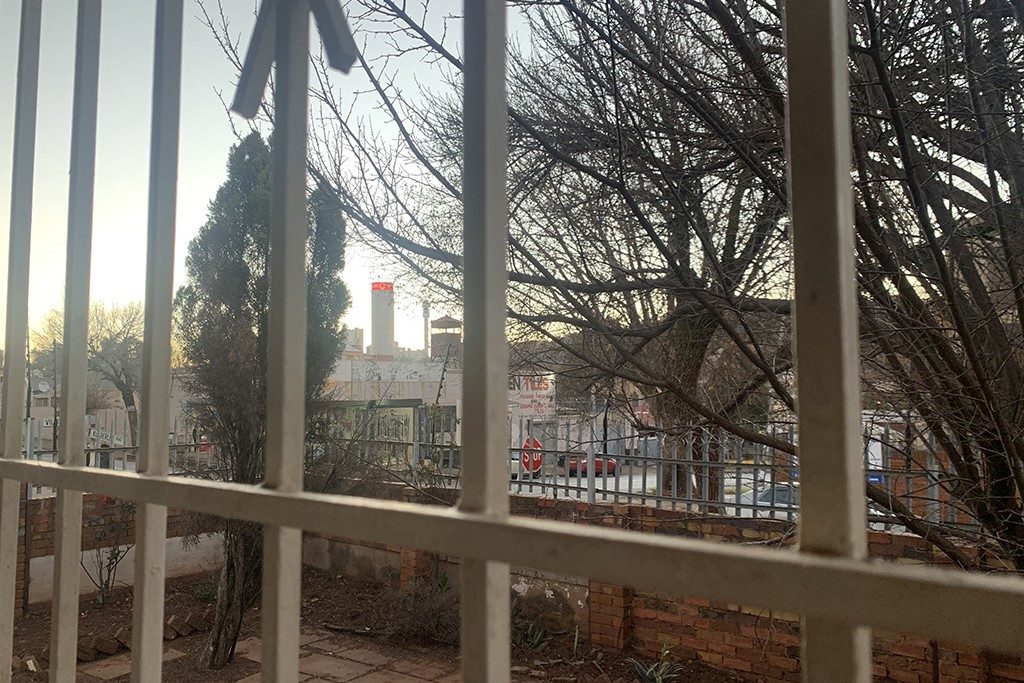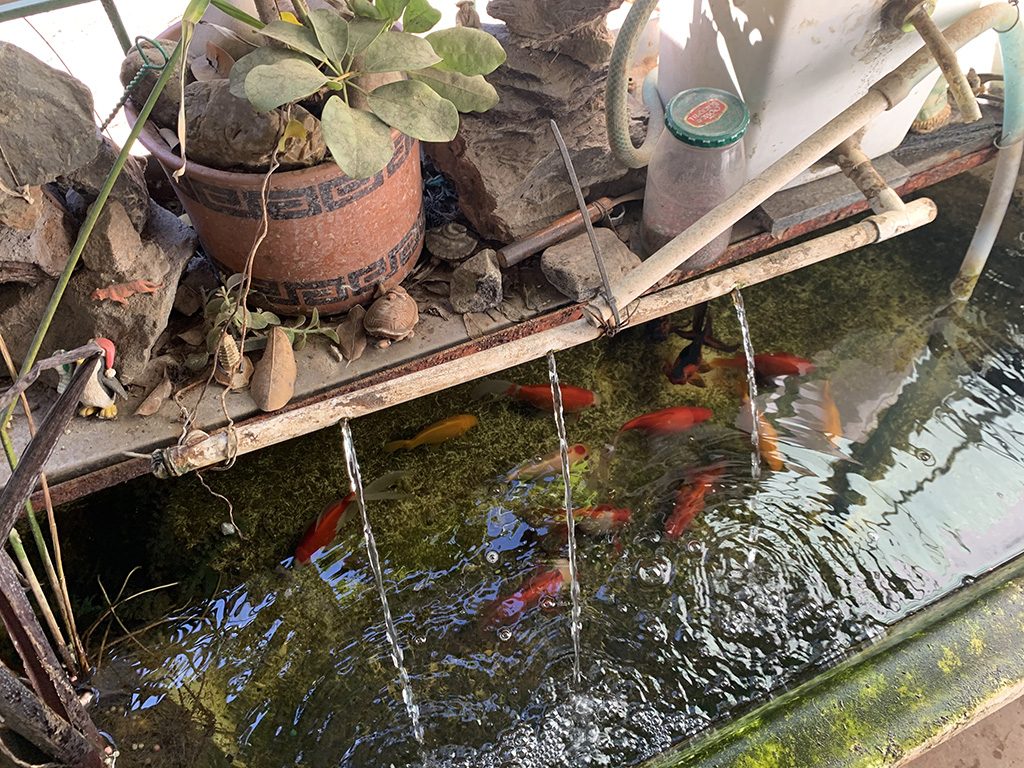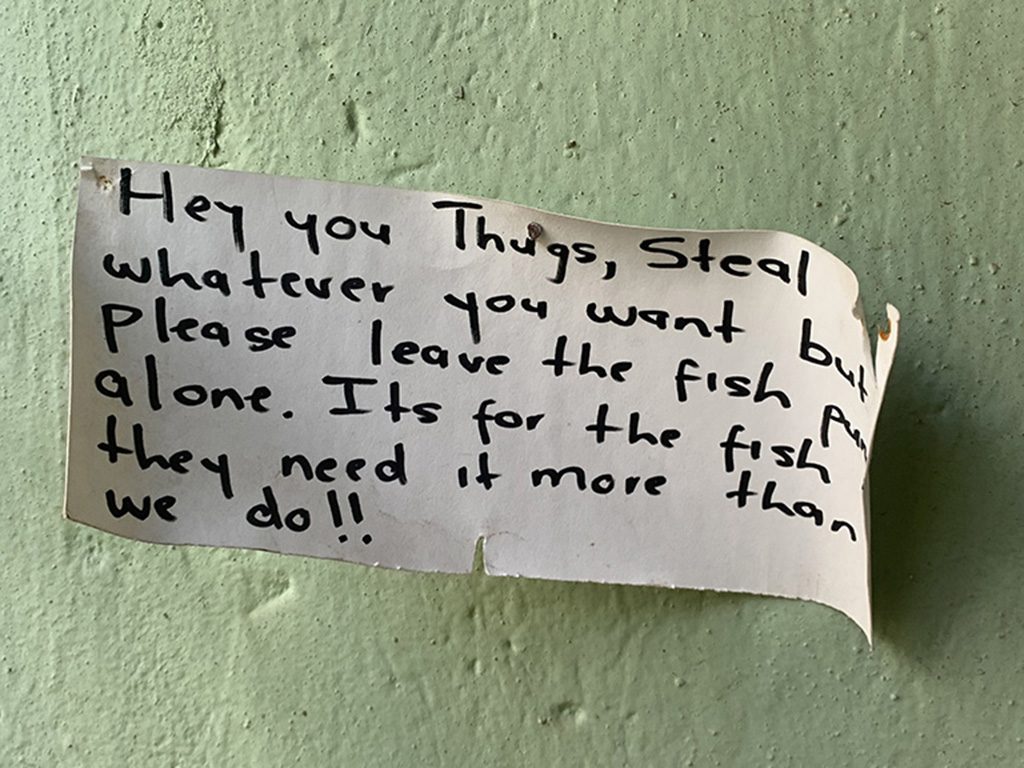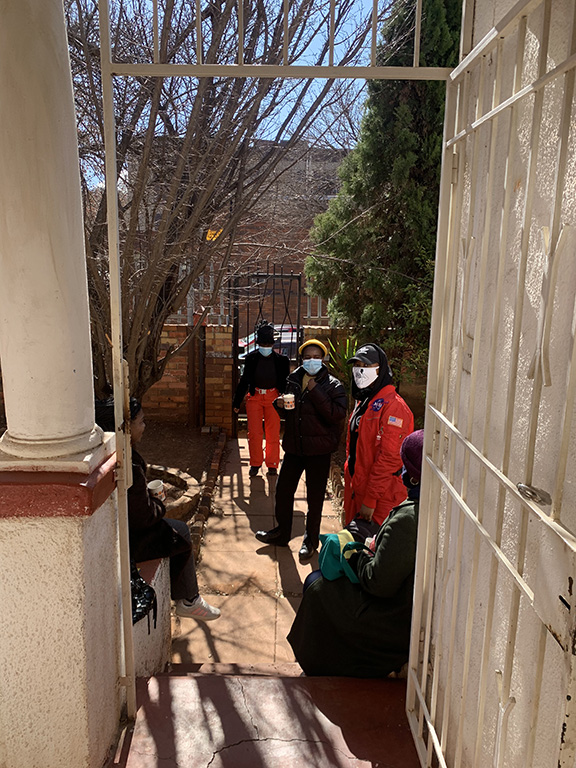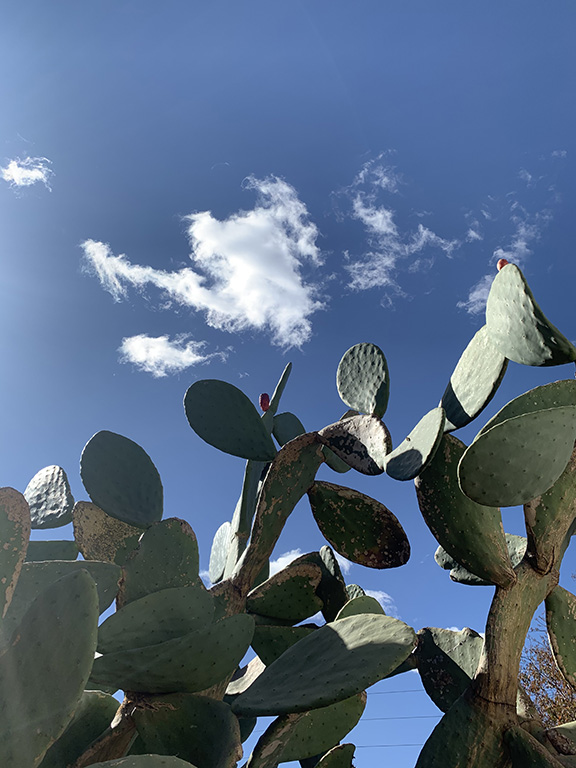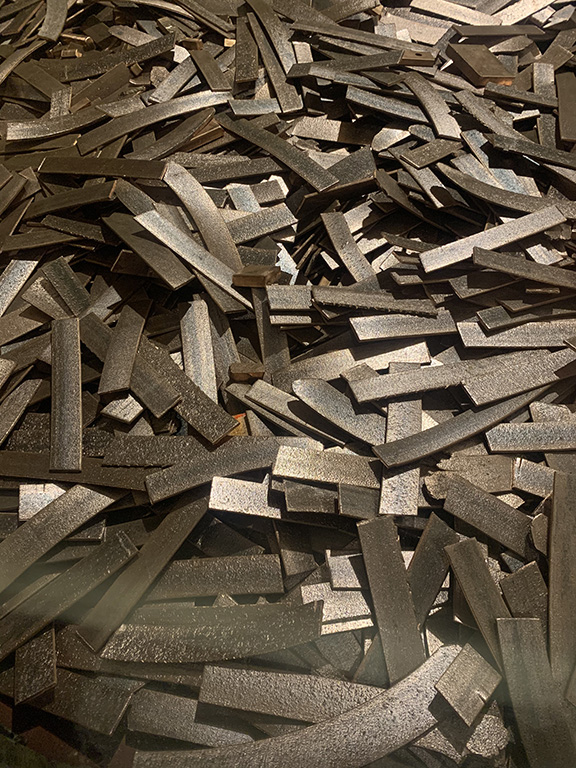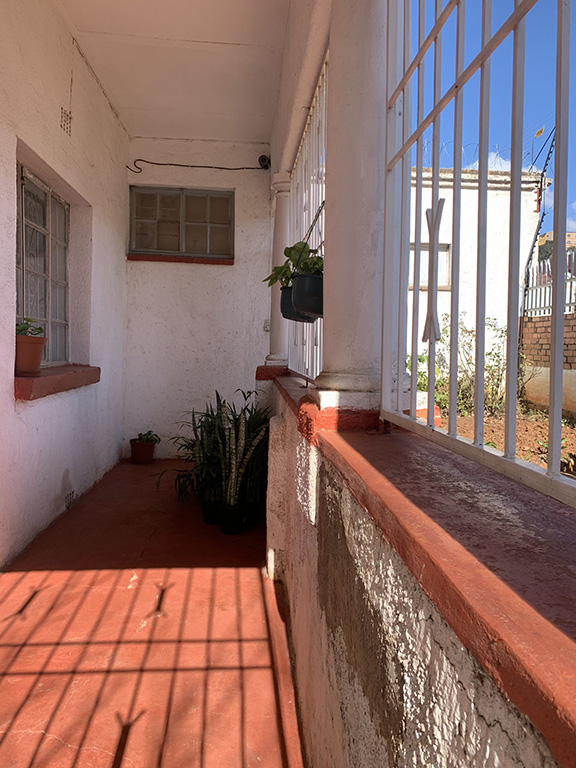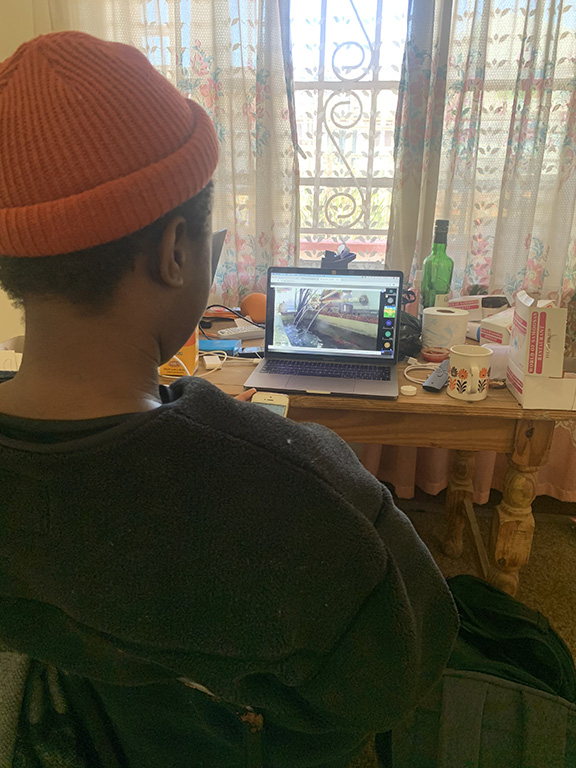
Episōdo: Beyond the ExhibitionMomentary inhabitations of time
Episōdo 02
Scenography for Suspended Time
A contemplation on the possibility of a paradigm outside relationships of reward and retribution, and to include other procedural forms to settle disputes.
3 July – 14 August, 2020
52 Kimberly road, Lorentzville, Johannesburg.
By appointment Tuesday - Friday 10AM - 4PM, Saturday 11AM - 3PM
Online Walkthrough was held on 13 August, and its archive can be viewed at

Protagonists: Heron, fish, copper, Nanni, Takahiro Kinoshita, Mr. King, Cici Wu, Pallavi Paul, Sunday Lai Long Sang, Hicham Berrada, money plant, snake plant, butterfly palm, Pushie the cat, and George Mahashe, who writes this text on a porch on a sunny Johannesburg morning:
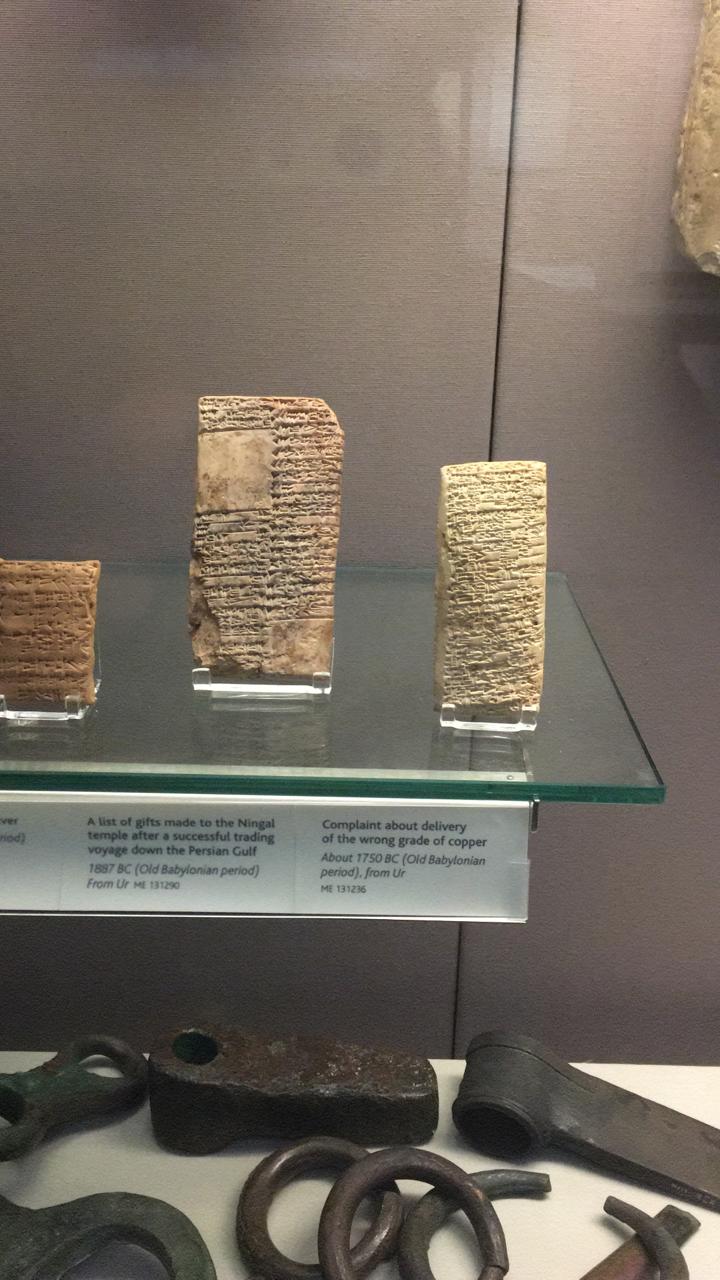

It starts with a conversation about my dissatisfaction with a copper staff that I had recently got made through my usual “magic” shop in downtown Diagonal Street.
I’d had the staff remade twice already, and each time I felt it too flimsy and not quite as heavy in copper as the amount I had paid for, so one could say I understand Naani’s position. With this frustration, I kept the flimsy staff aside and eventually resolved to make one myself through a ruse involving some “unsuspecting” astrophysicist. My interest in the Babylonian clay tablet is not so much for its detailing of an ancient complaint and its sanctioning for our overdeveloped complaint culture—you can read more on this on Complaint Tablet to Ea-Nasir Memes for Teens Who Are Not of Good Quality.1 The tablet is interesting to me because I find the subject of the dispute/bargain—the question of the quality of copper—to be significant, especially given that through my ordeal to procure a sturdy staff I have become hyper aware of just how much copper is in circulation in our lives. This moved my experience of copper beyond its ritual significance, giving credit to the often heard excuses for Joburg’s power outages attributed to copper theft along the power line chain—immortalised in the “izinyoka” adverts. Or the whispers about a series of bronze sculptures that were stolen and possibly melted to feed the scrap metal market. Not to mention the electronics and other mechanical parts in our daily objects (including the one rand coin). My interest in copper is of course a question of magic (or whatever you might wanna call this sort of thing), as a ruse you might conjure up to force some conceit against fate and the unbearable bureaucracy of our existence. As such I find it fitting to invoke the legend of the Shamir and the many ruses that accompanied King Solomon’s quest for this ancient magical wonder, as he built his sacred place.2
King Solomon wanted to build a Temple for his God, which used a lot of brass and bronze in addition to gold, but could not use any tools/metals of war, like iron.
He had to find another way to cut stones. His priests told him a story that they knew about a worm called the Shamir, which Moses had used to carve the Ten Commandments on the famed stone tablet, as well as to inscribe the names of the twelve tribes on precious stones on the high priest’s breastplate. No one knew the whereabouts of the worm, which had been created on the sixth day of creation. The priests suggested that Solomon should conjure up some demons and interrogate them, get them to tell him the whereabouts of Shamir, or of someone else who might know. To that effect King Solomon summoned a female and a male demon (who had to be interrogated together) and after much pain they maintained that they really did not know, but that Asmodeus, the King of the Demons would surely know. The demons furnished King Solomon with the whereabouts of Asmodeus, his daily routine and remarked on his careful and suspicious nature—how he wakes every morning and flies to heaven where he listens to the heavenly songs of angels recounting the misdeeds and the required penance of mortals, before returning to drink from his especially dug water pit that he guards fiercely.
So we find that the quest for the Shamir begins with a ploy to capture the powerful Asmodeus and bring him before King Solomon. The con involved draining the water from the water pit that Asmodeus drinks from, and filling it with sweet wine while he was away on his daily jaunts—eavesdropping on the heavenly songs (some remark that this refers to the libraries where he gleans into the future of mortals so as to know how/when to trick them). With this scheme Solomon’s aides set out with some wine from the vine3 known to be irresistible, a fleece, and a chain with the name of GOD written on it (another curious aid—writing—that Solomon employs to imprison other demons, who then make up the labour for building his temple). Replacing the water in the pit was no easy task. Asmodeus was afraid of water, and he guarded the pit tightly. The story goes that the pit was covered with a large immovable rock, upon which he placed a magical seal that would notify him if tampered with. On his return from heaven everyday, he would first inspect the seal carefully before quenching his thirst. To bypass the seal King Solomon’s aides dug a hole at the bottom of the mountain, drained the water from below, and then plugged it with the fleece, and through another hole which they made at the top of the mountain, they replaced the water in the pit without having tampered with the seal.
Upon his return Asmodeus inspected his seal and, when he was satisfied with it, he opened it to drink, but is not fooled. He remarked of his disdain for alcohol and bemoaned its role in man’s undoing, refusing to partake in this compromising earthly delight. But as time passed he grew thirsty and thought to himself, let me drink just enough to wet my lips. He did this several times until he enjoyed the wine so much that he drank the pit dry. Then he fell asleep. And that is how King Solomon’s aides put the enchanted chain around his neck and led him back to Jerusalem. Along the way Asmodeus performs some gestures of kindness and indifference, which we later learn to be a demonstration of him being privy to the fate of man.4 Upon being brought to King Solomon, Asmodeus is indifferent to the king’s authority, leading Solomon to interrogate him with what one might call incredible cruelty, but of course it is argued otherwise. At the end of the torture the King of the demons divulges that the worm Shamir was entrusted to the prince of the seas (another demon—sometimes called the angel of the sea) who only ever loans it to the Hoopoe bird that lives high up in the mountains. It is only the Hoopoe bird that is trusted with the Shamir, and only under strict instructions to bring it back as soon as the job at hand is done. When asked what the bird does with it he answered that the bird uses the Shamir to break through big, uninhabitable mountains to plant seeds of trees so that they may become habitable for humans, hence they also call the bird the “rock splitter”. So now King Solomon sends out his aides once more, this time to retrieve the Shamir from the Bird. But he refuses to release Asmodeus.
To get the Shamir from the Hoopoe bird, King Solomon gives his aides some glass. When the aides arrive on the mountain, they find the bird’s nest and wait for the bird to go about its daily business. Once the bird leaves its nest, they lay the glass over it so as to bar the bird access to its nest. When the bird returns and sees its young and finds it cannot get to them because of some hard force field, it quickly hurries to the garden of Eden and borrows the Shamir from the demon so as to break the hard barrier imprisoning its young. On its return, just before it uses the Shamir on the glass, the King’s aides, who are hiding out of sight, let out a loud sound that causes the bird to panic and drop the Shamir. The aides catch the Shamir and run off to present it to King Solomon. It is remarked that when the Hoopoe bird realised what had happened, it died by suicide because it had failed to uphold its oath about returning the Shamir it had borrowed. King Solomon now uses the Shamir to build his temple (without any metals of war) with the help of more demons that he captured5 through magical amulets6 carved with the aid of the Shamir; but he eventually suffers a trick at the hands of Asmodeus who goes on to impersonate him and sleeps with his mother and all his wives. They say after this ordeal, King Solomon slept surrounded by 700 combat-trained soldiers who guarded his bed lest Asmodeus should return.
The story of the Shamir, said to be no bigger than a grain of barley, is interesting not only because of its role as a central protagonist in a series of situations that inspire images of the trickster—as King Solomon is led down a rabbit hole of dirt to build a holy site—but also in the debates about its quality or personae. In most cases it is said to be a worm whose sight/gaze7 can break the hardest material or melt hard rock. In other cases (mainly in Arab text) it’s spoken of as a green rock—the thing that first made me curious about its relationship with copper ores that sometimes include radium and uranium in its composition. It glows green, and its beam (sight) is the thing that disintegrates or fractures rock.8 Even more interesting is the story of how it is stored—in a lead box (another motif of alchemy and protection against dark magic) wrapped in soft wool placed on barley bran—which is at the heart of ideas that the Shamir is a radioactive agent, as was proposed by controversial author Immanuel Velikovsky.9 It is also interesting how the Shamir is said to have lost its potency (consistent with the lifecycle of the green stone radiation) after 400 years, as well as the idea that it was created specifically for use in the temple building and ceases to exist as the temple is destroyed by the King of Babylonian, Nebuchadnezzar.
EXIT
I share this story, which is not really about copper10 or the tablet, as a pretext, a scenography for the Johannesburg Episōdo 02. The story follows conversations about Kinoshita, who replicates the clay tablet, foregrounding copper. What stood out was the way this encounter with a picture of a small, portable, 3000 year old clay tablet that had entered a conversation in Joburg—and led to someone going into the British Museum to photograph the wrong tablet—would lead to dedicated research and study just to recreate a tablet that could have easily been 3d-printed. This dedication and time spend made me think of the nature of deliberation as going down rabbit holes, which is what a quest for something magical involves. When I first thought of King Solomon, it was because I wanted to revisit some abandoned stories of his copper mines, one of which is rumoured to be in Phalaborwa, just 500 odd kilometres from Johannesburg. So in that process I was led down a rabbit hole of Jewish texts, freemason podcasts, YouTube videos, Babylonian legends, mining journal articles, and a much welcomed encounter with the figure of Velikovsky (which saved me when I sought the help of astrophysics to make my staff). I even thought at some point that I had conjured up Asmodeus and I had to keep a jar of water by my bed just so I could sleep.
As such I tell this story not so much to give you a context for the Episōdo, but to point to the ruse that governs this occasion—for, indeed, this Episōdo can be seen as an elaborate ruse. But to go into that I will have to tell you another story that has circulated in Johannesburg, about the luring of a heron to avenge a school of fish in a pond in Berea that suffers a senseless death by the heron, killed without being eaten or the heron taking them away.
George Mahashe
1 https://www.facebook.com/onaccountofthatonetriflingMinaofsilverthatIoweyou/
2 Extract: and the subsequent schemes he devises to deal with the terror that came from his brush with the powerful protagonist Asmodeus, who facilitates his access to the Shamir.
So this is a story of the bargain we make to achieve our magic and the sometimes darker magic we must learn to deal with what we unleash. Like my staff, the pretext is a story of an attempt to make an artefact/edifice to partake with the heavenly realm, and for such a quest one cannot spare on the quality of the endeavour. In the Shamir’s case, it is a story of King Solomon’s endeavour to build a temple for the GOD of Israel in the 10th century BCE, as recorded in the Babylonian Talmud and recounted with many variations as the Shamir’s nature is debated.
3 Whose name I can’t remember.
4 One of the gestures was his sadness for a bride, whose groom would soon die, condemning her to wait for his underage brother to free her when he came of age. This little story in a way gives a glimpse into Asmodeus’ role as a demon of lust who preside over the difficulties of conjugal visits, killing off young brides’ husbands to protect the women from men who do not love them and facilitating licentious dreams of the men’s carnal desires, causing them to lust after other woman and leave their wives.
5 Upon finishing the temple King Solomon brought Asmodeus before him and in a strange exchange Asmodeus tricked Solomon into removing the chain with the name of God and regained his power. His wings grew and connected heaven and earth and then he flung King Solomon far from the palace and took his place. For King Solomon, who lived as a beggar for some time, to regain his throne, he approached one of his minister who with caution enquired on King Solomon’s conduct with his wives, who answered that he was not quiet himself and insisted on having intercourse with them even during their period.
6 Such amulets can be seen as the same or similar amulets that is used/referenced in the recent film “Atlantics”, particularly by the protagonist Souleiman, which is the Arabic version of the name Solomon. There is room to weave the Djinn (parallel for demon) referenced in the film as well as a link between Asmodeus’ disruption of the wedding night for women who do not love the men they marry or when the man is not really interested in the woman.
7 Some even liken the worm’s gaze to medusa’s hair.
8 One of the more interesting ones is proposed by one of my favourite character Velikovsky––more later.
9 Velikovsky, a psychiatrist, that used biblical texts, Egyptian texts and other ancient text to create a rather “accurate” model of the universe that challenged the 1940s models, further exclaiming that scientist were ignoring key insights from some of the cuneiform clay tablet that gave a different account of the heavens prior to the biblical exodus. He proposed that the miracle were a result of a catastrophic asteroid event, and used similar texts to provide a different view of the Shamir.
10 This story is not so much about copper but about the ruse we do, when I first wanted to talk about copper I had King’s Solomon’s mine in mind, but I couldn't help but recognise the story of the Shamir as a worthy protagonist, to add to the series of protagonist that lay wait for you in this auspicious house.
Pushie is a cat that lives next door to Mr. King’s House. No one knows a cat.
Mr. King built a cage that he lived in. The cage was modest, and connected to the outside through a complex of patched up wires. Fish swam happily in a bath tub protected by the cage. A bird in a cage within a cage chirps away. Outside Mr. King’s cage a cactus grows taller than the cage, a crinum lily is in bloom as the aroma from aubrietia fills the air. Mr. King is gone.
Money plant, snake plant, and butterfly palm are companion plants, said to work in concert to keep air healthy and fresh. These plants are easy to maintain, affordable and are easily available. Paharpur Business Centre, in Delhi, is full of them. The building’s owner is industrialist / environmentalist Kamal Meattle, who suffers from a condition which makes him unable to breathe the air of Delhi. Not wanting to leave, he came upon these plants in a study from NASA that identified Areca Palm (or butterfly palm), Money Plant (or golden pathos or devil’s ivy), and Snake plant (also called Mother-in-law’s tongue, which is also the name given to red curry spice in Durban. There is a critique of this. The NASA experiment was a closed, controlled system with a sealed chamber—the sealed chamber is big enough to fit one arm chair—perfect for a spaceship but not the world which isn’t a closed system.
In a world as big as a jam jar and as small as a universe, crystals grow in micro time, fall upon their own weight, and grow again with Hicham Berrada.
Birdsong, sirens, and wind cascade from loose gaps and hinges. A door in Delhi meets its frame. With nets installed, we are locust-ready with Pallavi Paul.
Yu Man-hon crossed the border from Hong Kong to Shenzhen and disappeared twenty years ago. Cici Wu sends a cow-shaped paper lantern to ride the ferry with him.
A heron comes to fish by drawing its wings together to shape an umbrella and create shade so it can see the fish. The heron into a garden to steal away the fish—scratches at the fish, wounds them, but can’t quite pick them up, so the pond is being lowered to keep them out of reach.
Fish live and work in a bathtub pond in the backyard garden of Mr. King’s cage. They are kept for decorative purposes, beneath a sign that implores thieves not to steal their water pump. There is a spherical glass object at the edge of their pond in which they can see a reflection of the world. They do not know that a heron dreams of them for dinner.
Universal remote control in hand, Sunday Lai Long Sang steals time from TVs in shopfronts of shopping malls after opening hours.
Copper comes in packages of 500g, 1kg and 5kg. Copper comes in granules, sheets, ingots, and scrap. Copper can be resold at the day’s LME price.
Nanni lived and worked in Telmun. Nanni imported, exported, and traded copper and other raw materials throughout Mesopotamia, a profession in which dealings sometimes involved contempt leveraged imaginatively against debt.
A. Leo Oppenheim was an Assyriologist who translated the world’s first customer service complaint: “When you came, you said to me as follows: "When he comes I will give Gimil Sin fine quality copper ingots." You left then but you did not do what you promised me. You put ingots which were not good before my messenger Sit Sin and said: ‘If you want to take them, take them; if you do not want to take them, go away!’ What do you take me for, that you treat somebody like me with such contempt? I have sent as messengers gentlemen like ourselves to collect the bag with my money, deposited with you, but you have treated me with contempt by sending them back to me empty-handed several times, and through enemy territory at that. Is there anyone among the merchants who trade with Telmun who has treated me in this way? You alone treat my messenger with contempt! On account of that one trifling mina of silver which I owe you, you feel free to speak in such a way while I have given to the palace on your behalf 1080 pounds of copper, and Umi Abum has likewise given 1080 pounds of copper apart from what we both have had written on a sealed tablet to be kept in the temple of Shamash.
How have you treated me for that copper? You have withheld my money bag from me in enemy territory so it is now up to you to restore my money to me in full. Take cognizance that from now on, I will not accept here any copper from you that is not of fine quality. I shall from now on select and take the ingots individually in my own yard, and I shall exercise against you my right of rejection because you have treated me with contempt.”
Takahiro Kinoshita works in Yokohama. Kinoshita is an art educator who works with Yokohama Museum of Art’s education department, where he teaches sculpture. Kinoshita remarked that the story of this copper transaction that has been in dispute for thousands of years caused him to think of his relative, who worked at a trading company in Yokohama. The relative used to tell Kinoshita how overseas trade, including copper trade, is a complicated business and that they received many complaints in their transactions.
George Mahashe writes about copper on a porch on a sunny Johannesburg morning.
Video documentation: Phatstoki
Photos: George MAHASHE



